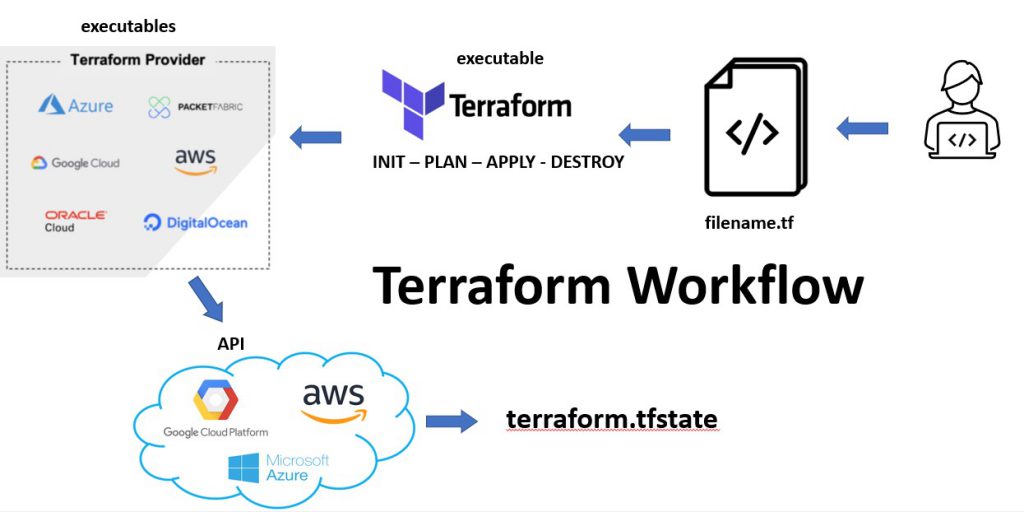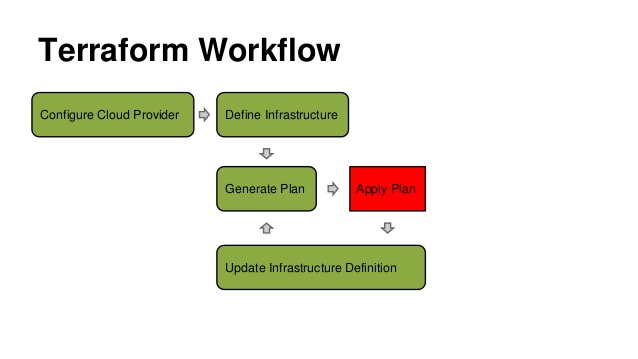Terraform Outputs: An Overview
Terraform outputs are an essential feature for managing and organizing infrastructure resources. They allow users to extract specific information from their Terraform configurations, making it easier to share and collaborate with team members. By planning and exporting outputs to a file, users can maintain a structured and version-controlled record of their infrastructure resources, ensuring seamless collaboration and efficient management.
Understanding Terraform Output Planning
Planning Terraform outputs involves organizing and structuring the output information in a logical and consistent manner. This process ensures that users can easily understand and utilize the output data for various purposes, such as sharing with team members, automating infrastructure management tasks, or auditing resource configurations. By planning outputs for exporting to a file, users can maintain a clear record of their infrastructure resources, facilitating version control and collaboration.
How to Plan Terraform Outputs for a File
Planning Terraform outputs for exporting to a file involves several steps. First, identify the essential information that needs to be shared or tracked. This may include resource IDs, public IP addresses, or other relevant details. Next, organize the outputs in a structured manner, using descriptive names and categories to improve readability and understanding.
For example, consider organizing outputs by resource type or environment. Use consistent naming conventions and avoid abbreviations when possible. Additionally, limit the number of outputs to reduce complexity and improve maintainability. By following these best practices, users can create well-planned Terraform outputs that are easy to understand, share, and manage.
Exporting Terraform Outputs to a File
Terraform provides several methods for exporting outputs to a file. The two most common methods are using the ‘-json’ flag and the ‘-out’ flag. The ‘-json’ flag exports outputs in JSON format, which is useful for programmatically consuming the data. The ‘-out’ flag, on the other hand, exports outputs to a plan file, which can be used for further processing or review.
When deciding which method to use, consider the desired output format and the intended use case. For example, if you need to share output data with a team member who is not familiar with Terraform, the JSON format might be more suitable. However, if you want to review the outputs before applying the changes to your infrastructure, the plan file format might be more appropriate.
Best Practices for Terraform Output Planning and Exporting
When planning and exporting Terraform outputs, follow these best practices to ensure optimal results:
- Use descriptive names: Choose clear and descriptive names for your outputs to make them easy to understand and identify. Avoid using abbreviations or acronyms that may not be immediately obvious to other team members.
- Limit the number of outputs: Too many outputs can make it difficult to manage and understand the infrastructure resources. Limit the number of outputs to only the essential information needed for collaboration and management.
- Organize outputs by category: Group related outputs together by category to improve readability and organization. For example, group all outputs related to networking together, or all outputs related to a specific environment.
- Consider security: Be mindful of the security implications of exporting outputs to a file. Ensure that sensitive information is not exposed or shared unintentionally.
- Review and update outputs regularly: Regularly review and update your outputs to ensure they remain accurate and up-to-date. Remove any outdated or unnecessary outputs to keep your plan file organized and manageable.
Terraform Output Plan to File Tools and Extensions
To simplify the process of planning and exporting Terraform outputs to a file, consider using tools and extensions such as ‘terraform-docs’ and ‘tfdocs’. These tools can help automate the process of generating documentation for your Terraform configurations, including outputs.
Terraform-docs
‘Terraform-docs’ is a popular command-line tool that generates documentation for Terraform modules and configurations. It can extract outputs, variables, and other information and format it into various output formats, such as Markdown, JSON, or YAML. This tool is useful for teams that want to automate the process of generating documentation and ensure consistency across their Terraform configurations.
Tfdocs
‘Tfdocs’ is a Visual Studio Code extension that provides documentation generation, linting, and validation for Terraform configurations. It can extract outputs and other information and generate documentation in real-time as you work on your Terraform configurations. This tool is useful for developers who want a seamless and integrated documentation experience within their IDE.
Real-World Examples of Terraform Output Planning and Exporting
Organizations and teams use Terraform output planning and exporting in various ways to manage their infrastructure resources effectively. Here are some real-world examples:
- Infrastructure as Code (IaC) teams: IaC teams use Terraform output planning and exporting to manage their infrastructure resources in a structured and organized manner. By planning and exporting outputs to a file, teams can easily share and collaborate on infrastructure configurations, improving productivity and reducing errors.
- DevOps teams: DevOps teams use Terraform output planning and exporting to manage their infrastructure resources as part of their continuous integration and continuous delivery (CI/CD) pipelines. By automating the process of planning and exporting outputs, teams can ensure that their infrastructure configurations are always up-to-date and consistent across environments.
- Managed Service Providers (MSPs): MSPs use Terraform output planning and exporting to manage their customers’ infrastructure resources in a scalable and efficient manner. By planning and exporting outputs to a file, MSPs can ensure that their customers’ infrastructure configurations are consistent, secure, and compliant with industry standards.
Troubleshooting Common Issues in Terraform Output Planning and Exporting
Even with proper planning and execution, issues can arise when working with Terraform outputs. Here are some common challenges and solutions for troubleshooting Terraform output planning and exporting:
- Outputs are not displaying as expected: If your outputs are not displaying as expected, double-check your Terraform configuration files to ensure that the outputs are correctly defined. You can also use the ‘-debug’ flag to get more information about the output values and any errors that may have occurred.
- Outputs are missing or incomplete: If some outputs are missing or incomplete, ensure that you have run the ‘terraform output’ command with the correct syntax and parameters. You can also try exporting the outputs to a file using the ‘-json’ or ‘-out’ flags to ensure that all outputs are captured.
- Outputs are difficult to read or understand: If your outputs are difficult to read or understand, consider using a tool or extension such as ‘terraform-docs’ or ‘tfdocs’ to generate documentation for your outputs. These tools can help you format and organize your outputs in a more readable and user-friendly manner.







